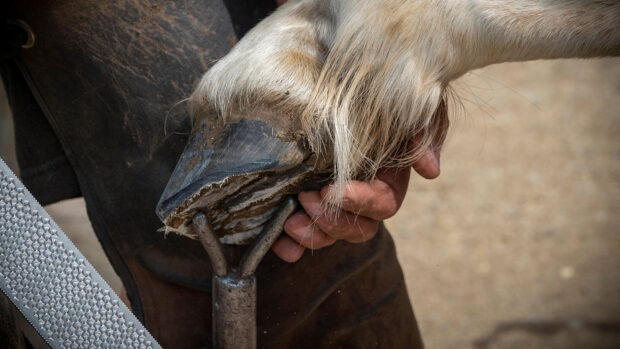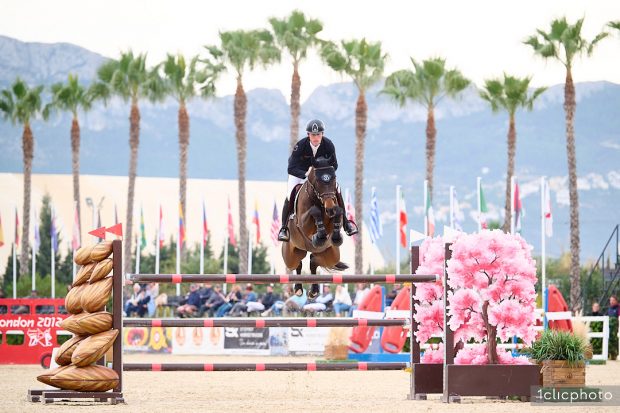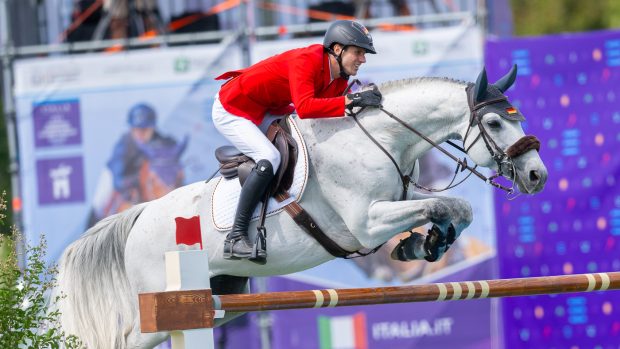Published, scientific data on ‘going barefoot’ is scarce, which is why anecdotal evidence, whether it be positive or negative, is our main source of reference when it comes to removing our horses’ shoes. However, the most important thing to remember is that there is no definitive right or wrong – some horses are suited to the barefoot philosophy, while others are not.
Making a choice
Contributing factors such as conformation, the level of weight-bearing work and general health can all play a part in hoof health. When considering barefoot trimming, arguably the best option is to take on board all the available evidence and then make an informed choice based on your horse’s individual circumstances.
According to the Farriers’ Registration Council (FRC), most farriers would support the idea that shoes should not be fitted to horses and ponies that do not need them. Likewise, most veterinary surgeons would agree that a sound, healthy, unshod horse that copes with its workload does not need shoes to improve its lifestyle.
Having said that, the decision to go barefoot should not be taken lightly. Holistic vet Nick Thompson, an advocate of barefoot trimming, says that many horses’ feet have been damaged by people not best-placed to give them due care and attention. “The modern horse will cope with being unshod, as long as his feet are trimmed in a manner appropriate to the terrain and workload,” he maintains.
Replicating wild horses’ feet
In the book No Foot, No Horse: Foot Balance: the Key to Soundness and Performance, by Gail Williams PhD and Martin Deacon FWCF, Deacon explains that the wild, feral horse wears down his hoof in such a way that it provides optimal balance for his individual conformation and limb-loading requirements.
Although it is clear that the hooves of wild horses offer an ideal model for our own horses’ feet, it is also important to be realistic about our animals’ requirements and individual situations before considering barefoot trimming.
Wild horses move about constantly, wearing their feet naturally, and do not stand in stables for long periods of time. The feral horse’s foot adapts to its surroundings, with those living on harder ground having shorter heels and more frog contact than those existing on soft ground. This helps the foot to attain correct shock-absorbing properties.
Modern ground surfaces can be detrimental to the horse’s foot – continual schooling on synthetic surfaces is said to restrict hoof wall expansion (as the foot needs a firm, non-cushioned surface to expand), while roadwork can increase concussion. Combining these factors with long periods standing in the stable, it is clear that domestic horses have very different environments to their ancestors.
However, if you think your horse could be suited to the barefoot lifestyle – and many people believe it helps to prevent problems such as laminitis or navicular syndrome – there are various types of specialist trim you could consider. These include:
Most of the barefoot trimming entrepreneurs have launched do-it-yourself seminars and courses on which owners can learn how to trim their own horses’ feet – however, do exercise caution if you are considering this option. Ask a vet with experience of barefoot trimming, your farrier and fellow horseowners for their recommendations and suggestions, especially if your horse has a particular problem that needs addressing.
Why go barefoot?
When blacksmiths first began forging metal to create horseshoes, factors such as physiology and circulation were not key considerations. However, in these enlightened times, many experts have looked into the effects of shoeing on the horse’s hooves, and barefoot supporters claim that horseshoes hinder the natural ‘pump’ effect of the foot, which promotes circulation.
In addition, they say placing a non-cushioning plate between the horse and the ground removes most of the foot’s natural shock-absorbing properties, causing concussion.
According to Nick Thomson, barefoot management – when combined with essential environmental changes – can even help to prevent equine conditions such as laminitis, splints, arthritis, ringbone and navicular syndrome.
Before you make changes…
Always seek the advice of your farrier before removing your horse’s shoes, particularly if you plan to undertake extensive roadwork, in case the rate of abrasion on the feet exceeds the rate of hoof growth. Your farrier may suggest a compromise, such as bare hind feet and shoes in front.
Nick Thompson explains that, it helps to make changes to the lifestyle of the horse at the same time. “The first thing to do when considering the barefoot option is to ‘naturalise’ the horse’s environment – I recommend permanent turnout with the company of other horses and shelter,” he says.
“To complete the move to an holistic lifestye, I also advocate not using rugs where possible and a high-fibre diet to suit the animal’s evolved dietary needs.”
The history of horseshoes
So, if going barefoot works, why do we shoe our horses? Quite simply, horseshoes were originally used to protect the feet of working horses in order to make the animals more useful to their handlers or riders, whether this involved carrying heavy loads along a rutted track or charging over a stony battlefield. In addition, many of the working horses through history have been stabled and it is likely their bare feet did not adapt well to the confines of a stall.
It is unclear when horseshoes were actually invented, as different sources place their appearance at different stages in history:
|




